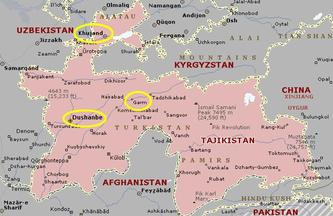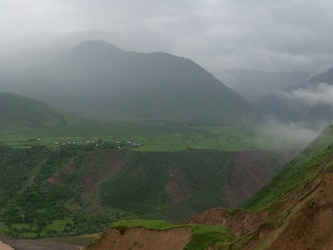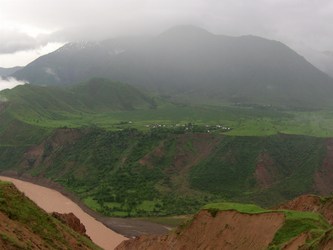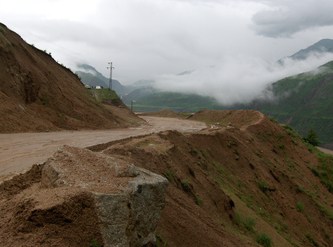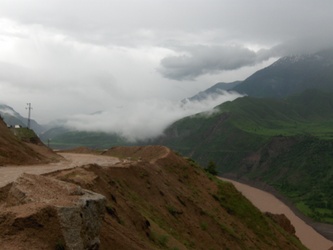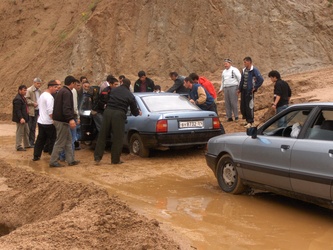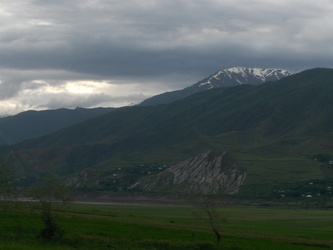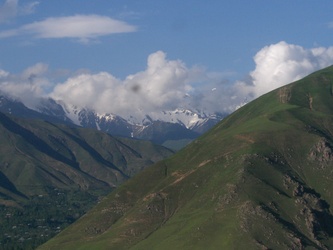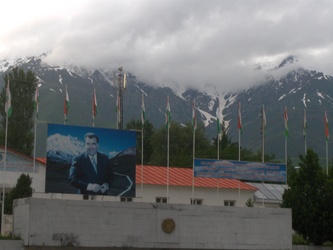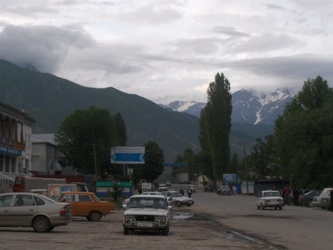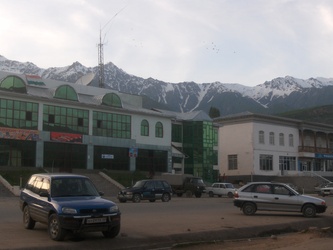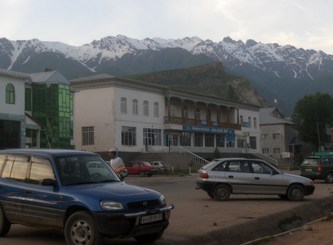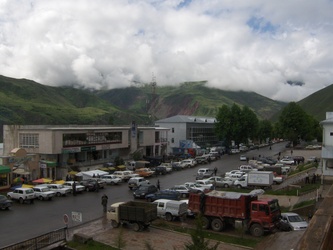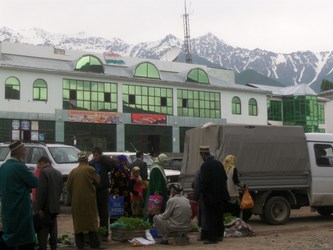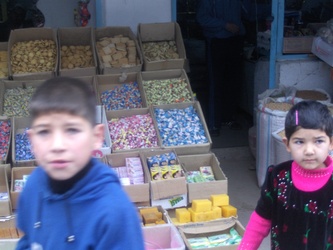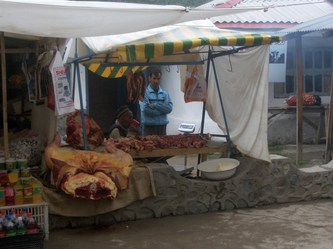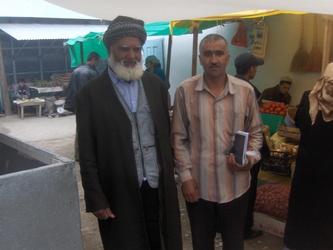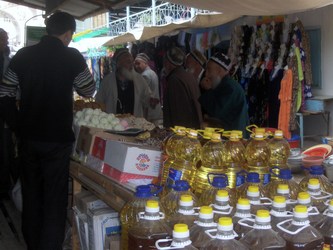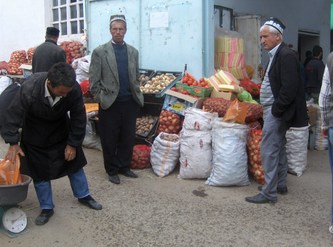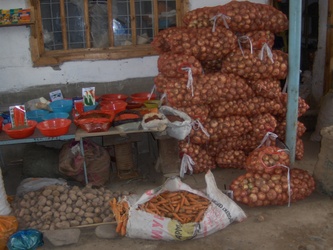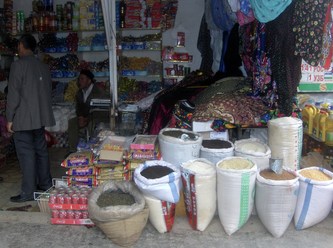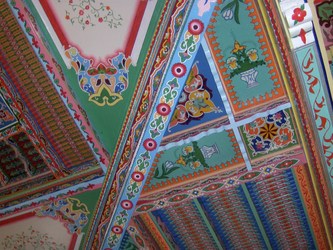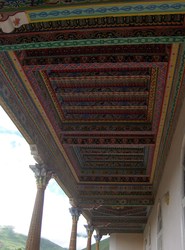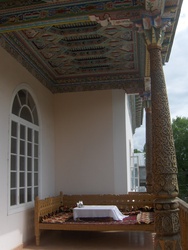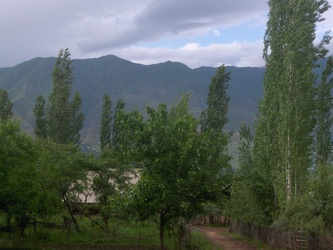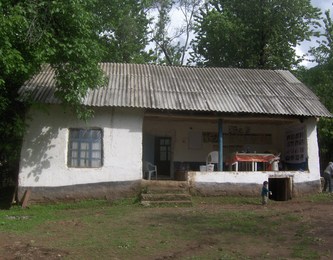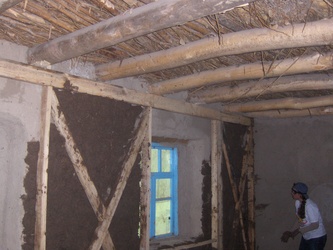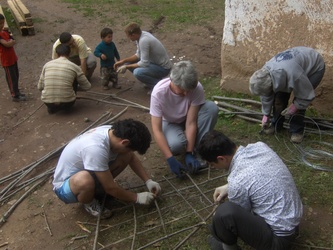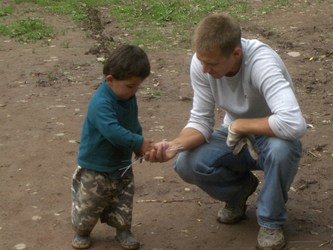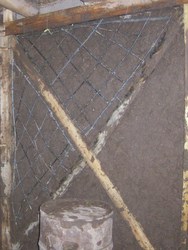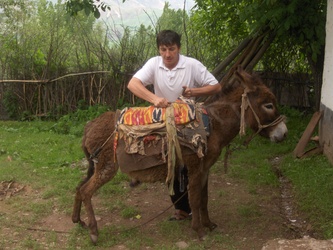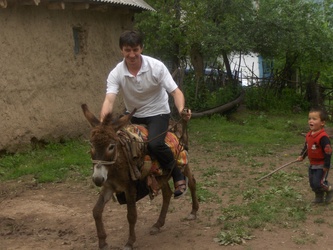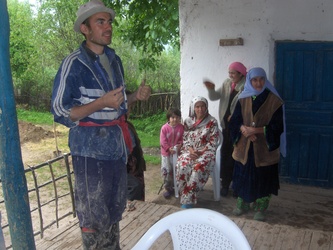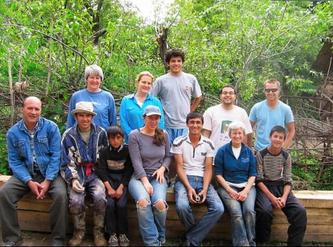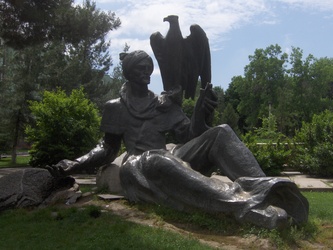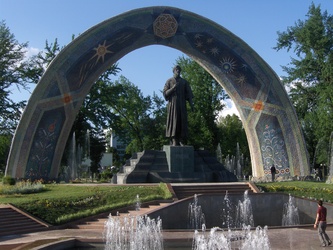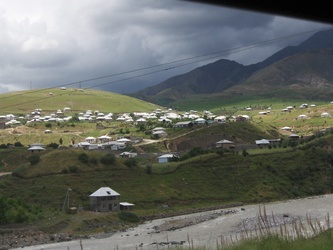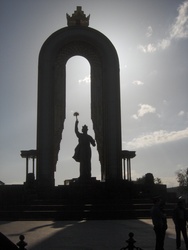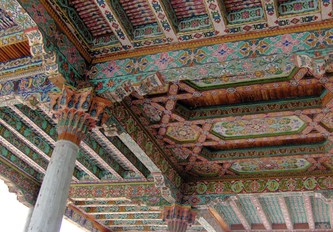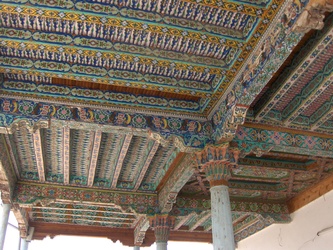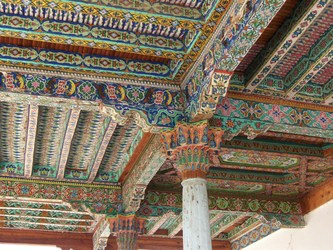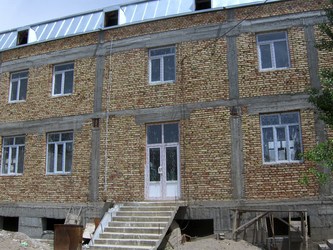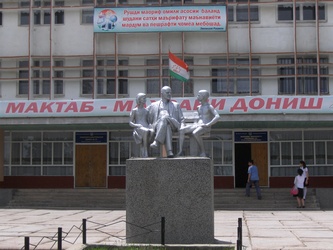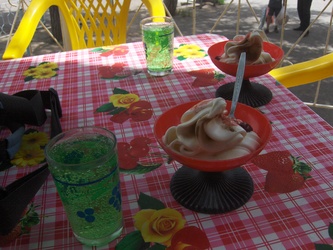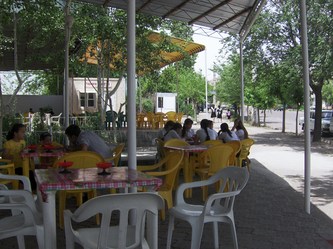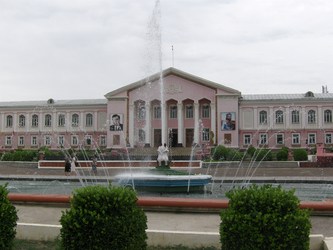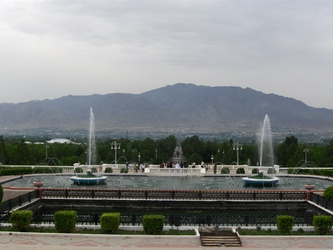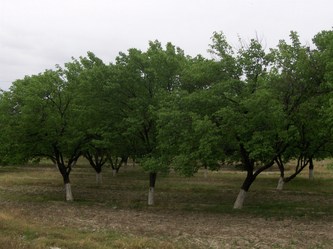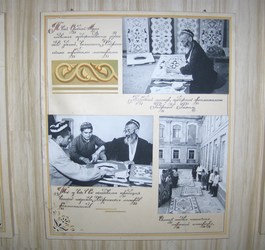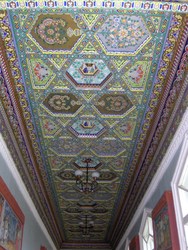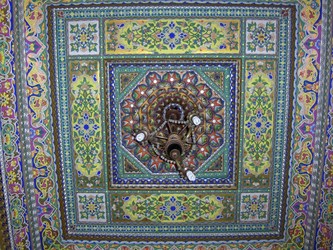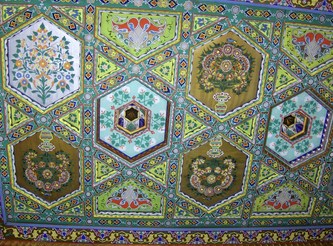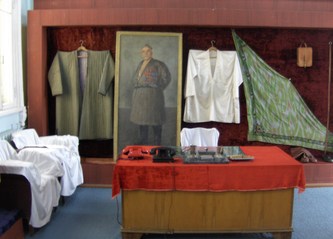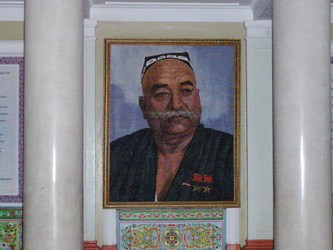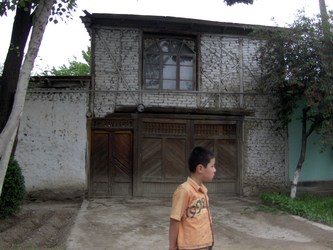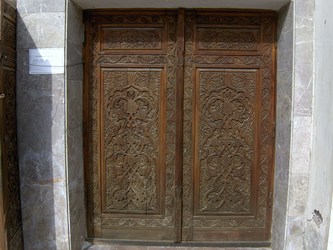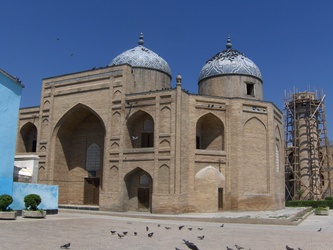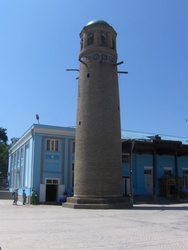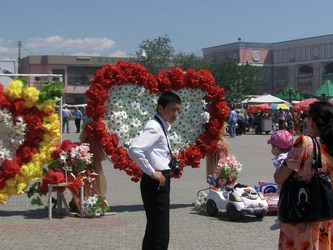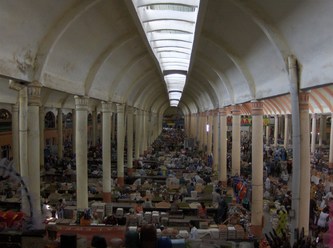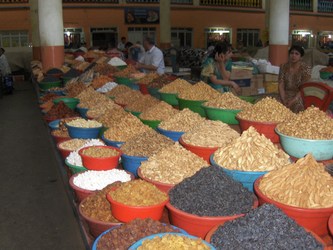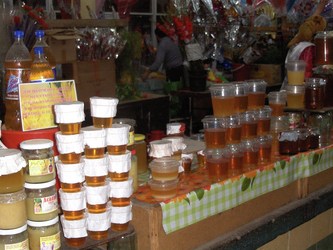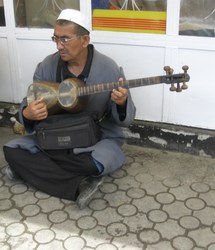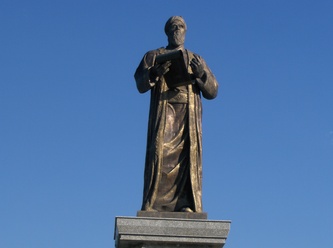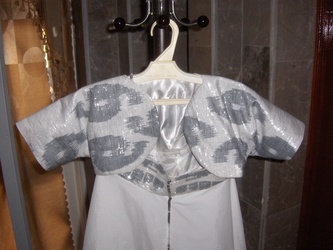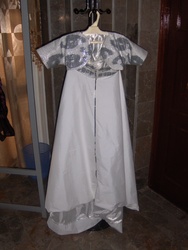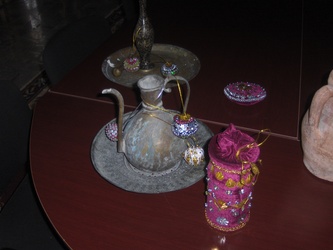|
|||||||
|
|
Tajikistan - "Like her mother's very name, She safeguarded her mother tongue...To the river she taught Rudaki..." (3 stanzas from the poem The Mother Tongue by the Tajik poet Bozor Sobir)Habitat for Humanity Global Village Program - Tajikistan (Garm, Rasht Valley)The Tajik people are proud of their extraordinarily beautiful country, their native language and their cultural heritage (which includes poets and poetry). Witnessing the landscape of the remote and mountainous Rasht Valley, I came to understand how the contemporary poet Sobir found the ancient poet Rudaki's verses alive in its powerful, churning brown rivers. The photos below were taken on the approximately 6-hour drive from Dushanbe (the capital city) to Garm, the municipal center of the valley where our project was located. Twelve intrepid volunteers along with our three tireless Global Village representatives from Dushanbe (our coordinator F., our translator S. and our driver B.) watched the mountains become more and more spectacular, the roads muddier and muddier, and the atmosphere more and more full of ghostly mists as our driver (who must have called upon both his nerves of steel and the guardian angel who prevents flat tyres) safely navigated the "Russian Audi" passenger van along terribly pockmocked roads with roaring rivers below and storms battering the windows with heavy rain.
After arriving in Garm, we were installed in a Soviet-style hotel that greatly exceeded my expectations for comfort, hot water and electricity, despite the discovery of a small brown and warty toad on the window ledge inside my room on the first night. From here we made regular sorties to our restaurant/tea house for breakfast and dinner and also to the thriving daily market which had a little bit of everything for sale and where we were watched with curious but not intrusive inquisitiveness as we threaded through the narrow rows of stalls. These walks were accompanied by a soundtrack of a music shop playing Tajik pop or traditional songs in the mornings or the murmurs of neighborhood men squatting and conversing on the steps of their homes in the evenings. There was a safe, small town feeling about Garm that quickly reassured me about what I'd gotten myself into. Nestled in this plain but beautiful place embraced by snow-capped mountains, I was able to enter that state of being "present" where there are no distractions but the agenda at hand: Rise, eat, work, eat, work some more, shower, eat, sleep.
The objective of the "build" was to assist two village families reinforce their homes to sustain earthquake damage (to which the region is highly prone). In two teams of six (along with the participation of local construction supervisors, the home owners and our Global Village staff) we covered the walls of a two-room farmhouse with two layers of a heavy compound of mud mixed with straw, reinforced in-between by sail-shaped frames of flexible but tough mulberry branches. I chose the tasks of scooping and throwing cow-pie sized globs of mud onto the walls (which required a windup somewhat like that of a baseball pitcher's to make it adhere) and also constructing the mulberry frames. Both jobs were technical in their own way and greatly rewarding for the teamwork they fostered. Throughout the duration of the project the worksite had a steady stream of visitors ranging from the home owner's two young children, to neighborhood kids on their way home from school, to a donkey. What I will remember most about the experience is the combination of hard work, laughter and goodwill that I hope has become a permanent part of the walls of that little home.
DushanbeAt the beginning and end of the Habitat for Humanity project, the team spent a few days in Dushanbe with administrative tasks, strolling around the city, visiting the Internet cafe, spending an afternoon at a riverside picnic site and celebrating with a farewell dinner. Quite near our hotel was a spacious new park dedicated to the poet Rudaki, where several of the team enjoyed an evening ramble. (I would see Rudaki again in Khujand.)
KhujandAt the conclusion of the Habitat for Humanity project, I continued on to Khujand where I spent several days with a journalist friend and his kind and welcoming family who cared for me with generous hospitality. Accompanied by one of the family's sons who had just completed his university degree and an equally accomplished young woman employed by the Soros Foundation, I enjoyed all nature of activities in Khujand including exploring its vast, covered marketplace, a visit to its ethnographic and archeological museum, an afternoon of paddle boats, a ferris wheel and ice cream at an amusement park, a visit to a neighborhood mosque, attending a book launch party for an expert on silk manufacturing, a visit to a club for students learning English and a private viewing of the Saidkhuja Urunkhojaev Culture Palace, a modern day conference center and museum dedicated to a hero of labor and agriculture, Arbob Urunkhojaev, located in the unassuming village of Arbob. (There are only 4 hits on Google about the Culture Palace, so it was certainly a unique opportunity to have been able to explore it.) Lonely Planet, you can contact me about an article for your Central Asia guidebook!
A description of the photographs Row one: Three details of a painted porch at a neighborhood mosque Row two: A new school construction of handmade bricks, a statue of Lenin outside a middle school, fancy ice cream and apple soda Row three: An ice cream cafe, two views of the grounds of the Culture Palace Row four: An apricot orchard in Arbob, an explanation of the construction of the painted ceilings at the Culture Palace, a painted ceiling in the hallway of the Culture Palace Row five: Two details of the painted ceilings of the Culture Palace, personal effects belonging to and objects from the office of Arbob Urunkhojaev Row six: Portrait of Arbob Urunkhojaev, home with wooden doors in the village of Arbob, carved wooden doors to the library in Khujand Row seven: Several views of the mosques (old and new) on the market square in Khujand Row eight: An outdoor photo studio on the market square in Khujand, the covered market, nuts and raisins for sale Row nine: Honey for sale, a street musician in Khujand, a monument to Rudaki Row ten: Two views of a wedding dress by a contemporary designer incorporating traditional ikat fabric, examples of metalwork and needlework from the Soros collection Row eleven: Fields on the outskirts of Khujand FoodDuring the course of my stay in Tajikistan I had the opportunity to enjoy several national dishes:
Plov - A dish of a thick-grained rice, carrots, potatoes and pieces of beef cooked in a savory and heavy oil (such as cottonseed oil) in a very large vessel resembling a wok. This is a delicious and hearty meal which our Habitat team enjoyed for a memorable lunch at the worksite. Manti - While waiting for the Habitat team to arrive in Turkey, I was introduced to manti in Istanbul, and happily put it away for dinner on almost every night of the Habitat "build." These dumplings of dough enclose onions, seasonings and meat and can be made small or quite large. The best way to eat manti is with dollops of sour cream on top. You've been warned, they're addictive. Kurtob - A salad of bread, yoghurt, onions, tomatoes, cucumbers, herbs, and melted butter. The bread soaks up all of the flavors. This stuff is best eaten with a spoon. |
||||||
|
|
|||||||
